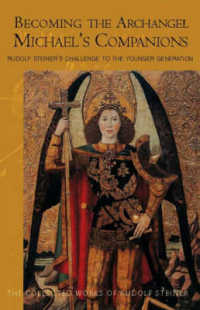Description
Aiming to go beyond reiterating the stereotypical narrative of the rise of welfare states, this interdisciplinary book examines the long-run historical processes of the development of the welfare state. It focuses on the complex political, social, economic and institutional transformations which give rise to these peaceful and cohesive societies.
Welfare is crucial to the story of peaceful social integration and this book explores and explains this vital connection, taking a non-linear view of the history of moving from fragmentation to peace with comprehensive welfare institutions. Chapters collectively focus on three central areas: (a) types of socio-political fragmentation, (b) the interconnection of social, political, and economic forces that led to the institutionalisation of integrationist processes and policies (including re-distributional welfare systems), and (c) how this new institutional development helped achieve, or failed to achieve, social peace and welfare. The international panel of expert contributors provide case studies from a rich variety of country contexts, including Germany, South Africa, the Netherlands, Austria, and the Nordic Countries.
This thought-provoking collection of essays is well suited for advanced students and researchers in social history, economic history, political economy and social policy.
Chapter 2 of this book is freely available as a downloadable Open Access PDF at http://www.taylorfrancis.com under a Creative Commons [Attribution-Non Commercial-No Derivatives (CC-BY-NC-ND)] 4.0 license.
Table of Contents
Introduction: The Varieties and Dynamics of Transitions to Social Peace: A Global Perspective on Social Cohesion (Christopher Lloyd and Matti Hannikainen) 1. From Social Fragmentation to Peaceful Social Cohesion: Historical and Future Themes (Christopher Lloyd) 2. Smooth Sailing Towards More Peaceful Societies? Long-run Nordic Development Paths (Jari Eloranta, Jari Ojala, Oriol Sabaté Domingo) 3. Public Sector Growth in Finland before the Welfare State: Central and Local Government Perspectives (Matti Hannikainen, Jarmo Peltola, Sakari Heikkinen) 4. The (Strong) State, the Welfare State and Social Cohesion – Finland in Comparison (Susanna Fellman, Riitta Hjerppe, Reino Hjerppe) 5. Decades of Disagreement: Rise of the Coordinated Welfare State in the Netherlands in the 19th and 20th Centuries (Jeroen Touwen) 6. Social Cohesion through Policy Coordination: The State, Interests and Institutions in Austria and Finland after 1945 (Johanna Rainio-Niemi) 7. The German Welfare State between Path Dependency, Federalism, and Political Shocks, 19th and 20th Centuries (Marcel Boldorf) 8. Transition paths out of social fragmentation: The South African state, social welfare and nation (Grietjie Verhoef)








